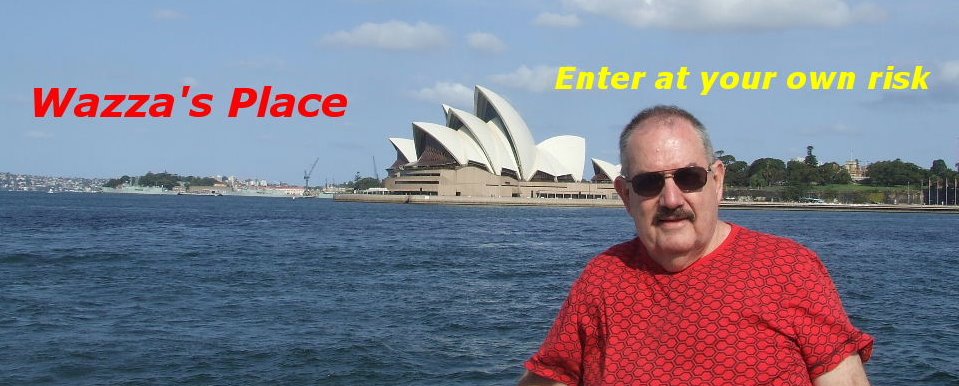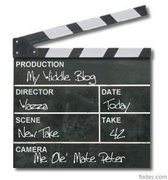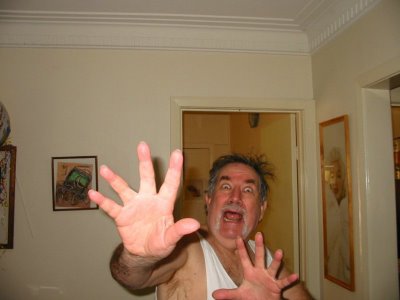Brisbane's Trolleybuses, A Bygone Era
A trolleybus (also known as trolley bus, trolley coach, trackless trolley, trackless tram or simply trolley) is an electric bus powered by two overhead wires, from which it draws electricity using two trolley poles.
 Trolleybus travelling up Elizabeth Street near Queens Park.
Trolleybus travelling up Elizabeth Street near Queens Park.
The trolleybus is essentially a bus driven by an electric motor instead of a diesel or petrol engine and with the electricity supplied to the bus from an external source, the electricity does not come from batteries or fuel cells carried on the bus. Two poles are required in order to accommodate the return current, which cannot pass to the ground as in the case of an electric tram (also called a streetcar) since trolleybuses use rubber tires, rather than steel wheels on rail.
The usual method of supplying the electricity is to suspend wires (trolley wires) above the roadway and to mount on the roof of the bus a pair of swivelling booms (sometimes called trolleypoles) which reach up to the wires. The bus does not need to travel directly below the wires as does a tram but can move quite a distance to either side. For example on the Story Bridge in Brisbane which has 3 traffic lanes in each direction, the trolley wires were mounted over the centre lane and the trolleybuses could travel in any of the lanes because the booms would swivel and still reach the wires.
Trolleybus coming off the Story Bridge.
Early in March 1947 the Brisbane City Council placed a order for 30 trolley bus chassis from Sunbeam Trolleybus Company in Wolverhampton in England.
Shortage of materials in post-war Britian meant that extensive delays occurred in delivery of the chassis with the first delivery not arriving by sea until 1950.
Trolleybus in the CBD travelling along George Street.
When trolleybuses were introduced into
Another technical advantage of trolleybuses is that electric motors develop their greatest torque or pulling power when first starting off- this makes trolleybuses eminently suitable for operation in hilly areas....and electric motors require very little maintenance compared with diesel or petrol engines.
The Committee approved a route from Prospect Terrace via the Valley and
However, "The Valley" (officially
 Tram in foreground with trolleybus in rear in Brunswick Street, Fortitude Valley.
Tram in foreground with trolleybus in rear in Brunswick Street, Fortitude Valley.
The
The conversion itself was difficult as the edges of the roadway had to be re-built and the trolleybus overhead erected while the tram service continued to operate. Then the tram track was removed and the centre of the roadway rebuilt while the trolleybus service operated! The inbound trolleybus wires at the junction were constructed above the tram wires, separated from them by wooden boards. On the first morning of trolleybus operation in November, 1955, buses had to coast through the intersection with their booms lowered until the tram wires were removed. In December, 1956 the service was extended to the final terminus at
There are several reasons for the considerable decline in the popularity of trolleybuses worldwide. The first was a great improvement in diesel engine technology but the main ones are economic. The cost of erecting and maintaining overhead wires is not necessary with diesel buses and is not fully offset by savings in engine maintenance or fuel costs. It is also much easier to establish or vary a route as a diesel bus can simply drive along a different road!
Although new vehicles entered service in 1960, some ominous clouds were gathering on the horizon. Public transport usage generally was declining rapidly as more and more people purchased cars. To accommodate the extra cars, a one-way street system was introduced which required the diversion of the uphill Gardens to Gregory Tce service by a more circuitous route via Alice, Albert & Turbot Streets. Economy was sought by removing conductors from this route in July 1960. This slowed the service as passengers now had to queue to enter the bus. Use of the centre and rear doors ceased at this time and this further inconvenienced passengers.
The poor economy of operating the small
However, the total integration of the trolleybus power supply with that of the trams inevitably meant the fates of the two were intertwined, and when abandonment was finally officially announced on
Extract from local newspaper July 2007.
A new CBD plan has recently been unveiled by Premier Peter Beattie. It includes five new pedestrian, cycle bridges and a light-rail system. More than 140km of tram track once criss-crossed
The State Government's last attempt to re-introduce light rail in 2000. However, it was quashed amid concerns about the impact on
Some have said that the trams and trolleybuses should not have been removed from the road system, and now it appears that trams maybe making a comeback (see extract above) but proposals like this have been put forward a number of other times but have never seen the light of day.
I think this could be a good idea but will believe it when I see the trams once again plying our streets. Melbourne still have trams running throughout the city and Adelaide only has one tourist tram that runs from the city to the seaside resort of Glenelg Beach.
Some text taken with thanks from "A Short History of the Brisbane Trolleybus System" book I purchased when I visited the Brisbane Tramway Museum.
I will do a post on the Museum next with photos I took during my visit.











5 comments:
Very interesting Wazza, some of the old photos especially, LOTS of Holdens, a maze of overhead wires and even an Amoco service station.
An amazing transformation of a city's transport system in a fairly short time.
A wonderful, informative post, Wazza...great old pics, too. :)
Very nice, Warren! I like those old electric trolleys. European cities still use them a lot.
Houston has ONE light rail route. It has been very political getting it in. It seems the bus lobby is winning most of the time.
I wish we had ANY KIND of mass transit into Houston. It takes over an hour to get there, and sometime 2 1/2 hours to come back during rush hours.
..
I'm ready for the museum posting, I will be in Scotland in the middle of September.
For now until October I'm semi-retired from blogging. I only run my photo place blog, but seem to be posting quite frequently on it.
http://jimmiehov6.blogspot.com/
..
This was very interesting to read- and the pictures were great!
Thanks for posting this, Wazza.
Junie
Actually when I grew up in Southern California, they had those same electric buses in Long Beach, Calif. They actually still have them up in San Francisco where my mother in law lives. ~ jb///
Post a Comment